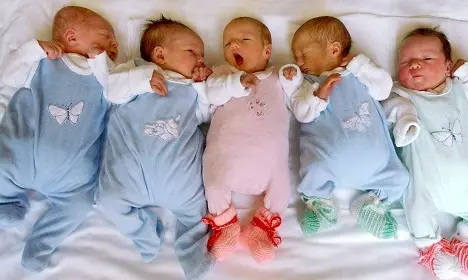Data shows that since 1995, when the first barrels of nuclear waste started arriving at Gorleben, nearly 1,000 fewer girls have been born, compared to the previous decade, according to Hagen Scherb, a mathematician at the Helmholtz Centre in Munich.
The “Lost Girls” phenomenon, described in an article published in Die Welt Friday, was also documented after the Chernobyl nuclear reactor catastrophe of 1986, according to the environmental group "Deutsche Umwelthilfe". But the figures weren’t so dramatic. The group did not release the girl-to-boy birth rates following that disaster.
Before the barrels of radioactive waste started rolling into Gorleben – despite repeated protest from environmental and citizens’ rights groups – there were 100 girls born for every 101 boys, the paper noted.
Following the transports that changed to 100 girls to every 109 boys. The statistical average across Germany is 100 girls for every 105 boys.
Karl Sperling, a genetics expert with Berlin’s Charité hospital has speculated that radioactive waves – even those well below acceptable limits - can damage the X chromosomes needed to produce female embryos.
But while the data clearly shows fewer girls being born, experts do not agree on the cause, the paper wrote.
The German environmental group, in a statement, demanded that the government provide a full scientific explanation of the data. The Lower Saxony health office noted last year that there were fewer girls being born in the state.
The data showed there was no evidence that a low-dose radiation exposure was produced by the Gorleben storage facility, the paper wrote.
However Berlin epidemiologist Christoph Zink criticized this, saying that the models used to determine the radiation dosing were outdated because the latest techniques and experience developed since Chernobyl were not being used.
Scientists agreed there is still a lot to be learned about radioactive biology, but current knowledge is good enough to reject some claims as false, they said.
The Local/mw

Comments